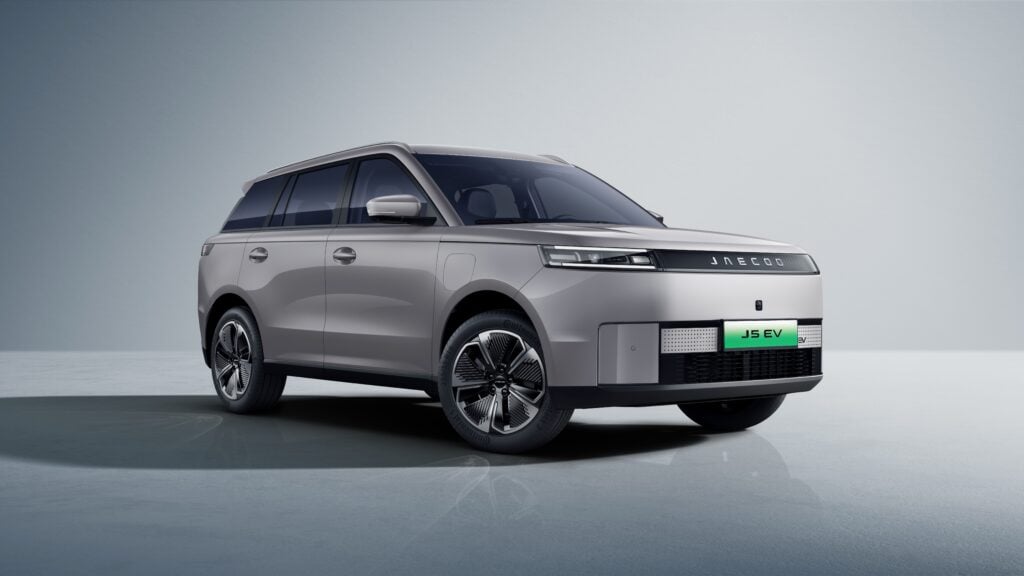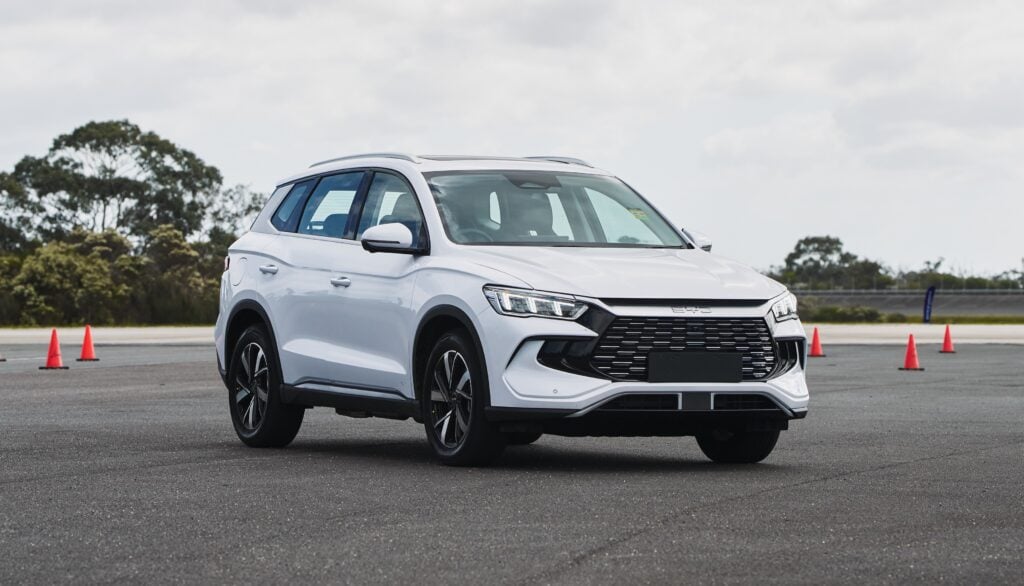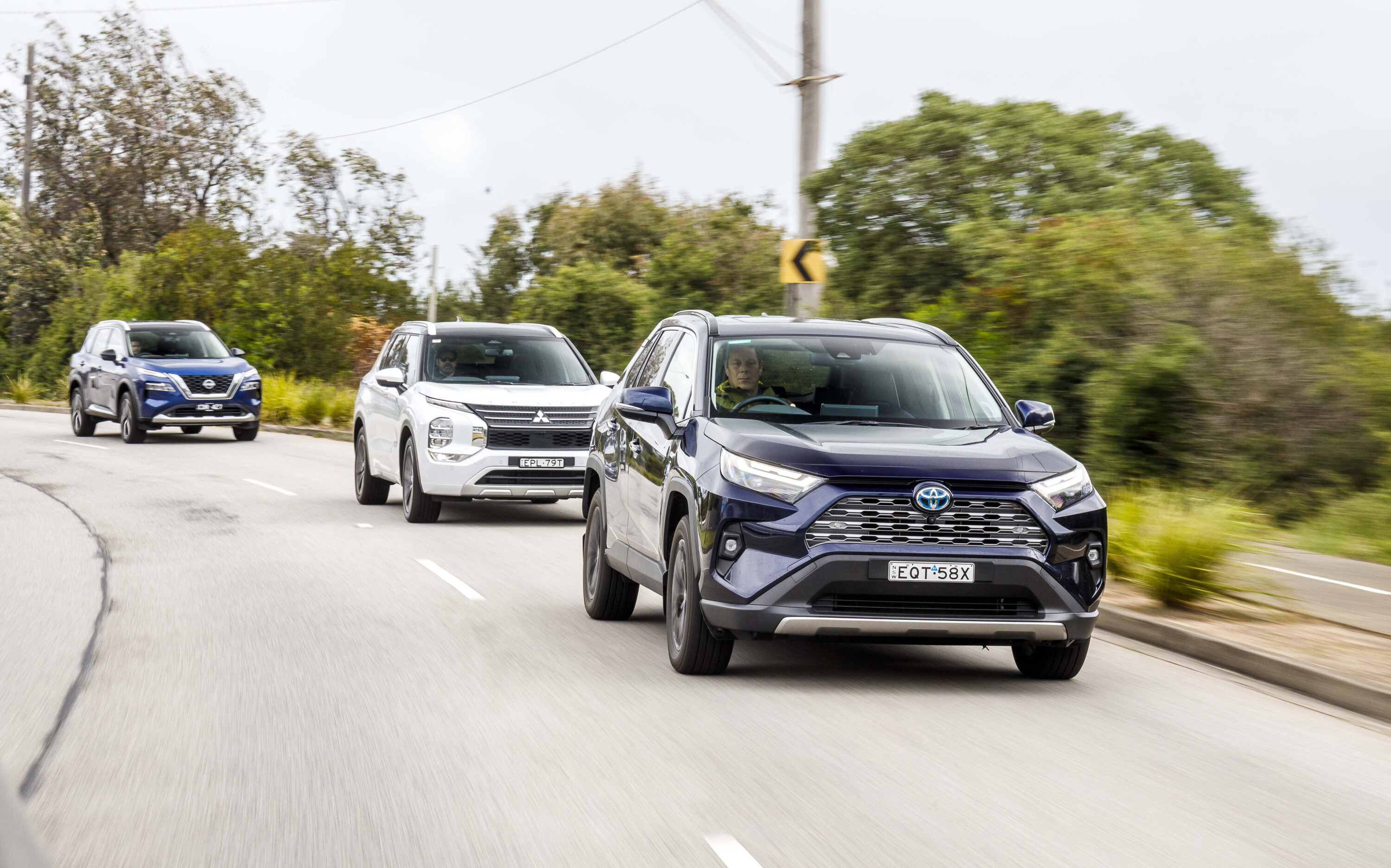
The Toyota RAV4 hybrid has been a popular choice for Australian drivers since it launched in 2019, thanks to its fuel efficiency, reliability, affordability, and spacious interior.
However, due to high demand and supply chain disruptions, wait times for the RAV4 hybrid continue to blow out to over 12 months.
If you’re looking for a new electrified, fuel-sipping SUV but don’t want to wait a year or more, plenty of alternatives are available with quicker delivery.
Here are a few of our top picks – including several plug-in hybrid and all-electric options.
Wait times for the RAV4 hybrid continue to blow out to over 12 months
JUMP AHEAD
Hybrid mid-size SUVs
- The WhichCar pick: Honda CR-V
- The WhichCar pick: Nissan X-Trail
- Cupra Formentor VZe
- GWM Haval H6
- Hyundai Tucson
- Kia Sportage
- Lexus NX
- MG HS Plus EV
- Mitsubishi Outlander PHEV
- Subaru Forester Hybrid
Something different?
- Honda ZR-V
- Hyundai Kona
- Hyundai Santa Fe Hybrid
- Mazda CX-5
- Nissan Qashqai
- Skoda Karoq
- Toyota Corolla Cross
- Toyota Kluger
- Toyota RAV4 petrol
- Volkswagen Tiguan
Ready to go all-electric?
Hybrid mid-size SUVs
The WhichCar pick: Honda CR-V
The new, sixth-generation CR-V has landed in Australia with a hybrid option.
That petrol-electric powertrain is currently restricted to a range-topping E:HEV RS variant, however, at $59,900 drive-away – similar to a RAV4 Cruiser once on-road costs are added.
The WhichCar pick: Nissan X-Trail
We’re fans of the current Nissan X-Trail, and the innovative E-Power hybrid system elevates it to an even higher level.
In a comparison between the RAV4 and X-Trail, linked below, the Nissan emerged victorious due to its value proposition, more refined interior, rear seating arrangement, quieter and more refined driving experience, and the added punch from the electric motors.
Cupra Formentor VZe
Cupra, the Volkswagen Group’s sporty Spanish brand, offers its Formentor compact/midsize SUV with a plug-in hybrid variant.
This option combines a petrol engine, electric motor, and a rechargeable lithium-ion battery to provide an electric driving range of up to 55km.
GWM Haval H6
Petrol-electric option popular for GWM’s Haval H6.
The hybrid version of the affordable Chinese-built GWM Haval H6 combines a 1.5-litre turbo-petrol engine with a 130kW electric motor, providing a total system output of 179kW and 530Nm.
Hyundai Tucson
The facelifted Hyundai Tucson due here in mid-2024 will finally see a hybrid option join the range.
The hybrid version of the Tucson shares the same 1.6-litre turbo-petrol engine from the larger Santa Fe, combined with an electric motor for a 171kW/350Nm total system output. The Tucson Hybrid claims a WLTP-rated combined fuel economy figure of 5.9L/100km for the front-wheel-drive model, and 6.6L/100km for the all-wheel-drive.
Kia Sportage
Due to arrive in Australia in the first quarter of 2024, the petrol-electric Sportage mid-size SUV is expected to offer at least two variants and be priced similarly to the RAV4.
The Sportage’s hybrid powertrain mimics that of the Sorento hybrid, with a 1.6-litre four-cylinder turbo-petrol engine linked to an electric motor, supplemented by a small 1.49kWh battery that can only be recharged by the petrol engine – not a plug.
Lexus NX
The more-premium Lexus NX is based on the same platform as the Toyota RAV4, sharing its hybrid powertrain in NX350h form.
It is offered with front- or all-wheel drive, starting from $69,050 before on-road costs.
MG HS Plus EV
The plug-in hybrid MG HS Plus EV – priced from $49,690 drive-away – offers a 1.5-litre turbocharged petrol engine, an electric motor on the front axle, and a 16.6kWh lithium-ion battery.
Combined outputs are 189kW of power and 370Nm of torque.
Mitsubishi Outlander PHEV
The second-generation Mitsubishi Outlander PHEV amps up the range, performance and cost, making it a great option.
Predictably, the downside is you’ll need to pay for the privilege. The plug-in powertrain is available in nearly every trim level but compared with a petrol-powered Outlander, the PHEV is at least $16,450 more expensive.
Subaru Forester Hybrid
The next Forester is expected to borrow segment-leading hybrid tech from Toyota, but this one is harder to recommend.
In its current form, the electrified Forester features an electric motor matched to a 2.0-litre engine and a small battery that delivers negligible real-world fuel savings and a performance hit over the standard 2.5-litre model.
While it acts more like a mild-hybrid vehicle, the electric motor can power the vehicle at low speeds, and it offers regenerative braking. The lithium-ion battery means there’s no spare wheel.
Something different?
Maybe a smaller or larger hybrid, maybe an extra efficient petrol model…
Honda ZR-V
Identifiable by its blue-badge highlights, the ZR-V E:HEV LX hybrid – similar in size to a Mazda CX-5 – combines a 2.0-litre four-cylinder with an electric motor for a 135kW/320Nm total system output and costs $54,900 drive-away.
It’s worth noting the ZR-V does not currently have an ANCAP safety score, with only a four-star Euro NCAP rating to its name.
Hyundai Kona
With a claimed 3.9L/100km fuel consumption – one of the lowest for a non plug-in car – the Kona hybrid small SUV has a theoretical driving range of almost 1000 kilometres.
It incurs a $4000 premium over the FWD petrol variant, with the sportier N Line package also available in hybrid.
It’s worth noting the new Kona does not currently have an ANCAP safety score, with only a four-star Euro NCAP rating to its name.
Hyundai Santa Fe
A hybrid powertrain was added to the current-gen Santa Fe mix in late 2022, ahead of an all-new model due in Australia in mid-2024.
The current Santa Fe hybrid, available in two grades with six or seven seats, is priced from $63,000 before on-road costs.
Together, the 1.6-litre turbo-petrol and electric motor deliver a combined 169kW and 350Nm, consuming 6.0L/100km on the combined cycle.
Mazda CX-5
The Mazda CX-5 remains popular for mid-size SUV buyers, though the Japanese brand has yet to offer a fuel-sipping electrified variant.
It has three petrol choices, including a thirsty but punchy 2.5-litre turbo.
Nissan Qashqai
The Nissan Qashqai small SUV range has grown with the addition of the new hybrid Ti E-Power flagship, swapping combustion-engined propulsion for electric motor drive with a petrol engine as a generator.
Like the X-Trail E-Power above, the hybrid system exclusively uses the 140kW/330Nm electric motor for propulsion. It is priced from $51,590 before on-road costs.
Skoda Karoq
The non-hybrid Karoq offers generous standard equipment, lively driving dynamics, plenty of Skoda’s ‘simply clever’ features, and a decent 6.6L/100km fuel efficiency.
That’s greener than the lightly electrified Subaru Forester ‘hybrid’, although certain features are bundled into expensive option packs.
Toyota Corolla Cross
The Corolla Cross sits between the smaller Yaris Cross and larger RAV4 and runs alongside the C-HR in the small SUV segment.
It is available with a 146kW 2.0-litre hybrid with front- or all-wheel drive, sipping as little as 4.3L/100km.
Toyota Kluger
With seven seats, the bigger Toyota Kluger Hybrid – which shares its powertrain with the RAV4 – is a great choice for families who need more space and versatility.
Toyota RAV4 petrol
Still keen on a RAV4, despite all this? While hybrid dominates the line-up, Toyota still offers two conventional petrol engines in the RAV4.
Those include a non-turbo 127kW/203Nm 2.0-litre that’s standard in the GX, GXL and Cruiser with front-wheel-drive, and a non-turbo 152kW/243Nm 2.5-litre with all-wheel-drive in the off-road-styled Edge.
However, while the wait time for a petrol RAV4 won’t be as long as the in-demand hybrid, supply is still limited due to production constraints.
Volkswagen Tiguan
Like the CX-5 and related Karoq, the Tiguan doesn’t have an electrified powertrain in Australia.
However, if you can’t wait, the brand claims it has a “strong supply” for the base 110TSI Life and other AWD variants in stock. A larger, seven-seat Tiguan Allspace is also offered for added practicality.
Ready to go all-electric?
Maybe it’s time to take the leap!
BYD Atto 3
The small-to-medium-sized BYD Atto 3 Standard Range is priced from $48,011 and brings a 50kWh battery and a WLTP-rated 345km range.
The Atto 3 Extended is $51,011 – both prices before on-roads – and has a bigger 60kWh battery and longer 420km range.
Hyundai Ioniq 5
Hyundai has introduced a new base Ioniq 5 that starts at $64,500 before on-road costs aiming directly at Tesla’s best-selling Model Y.
While the Tesla offers 71km more WLTP range (384km v 455km), the larger Hyundai hits back with a greater amount of cabin space.
Tesla Model Y
The Tesla Model Y continues to be a top-selling choice for Australians making the electric switch, with an efficient design, high-tech features, and a practical medium SUV body.
It is priced from $65,400 before on-road costs with a 455-kilometre WLTP-rated driving range.
We recommend
-
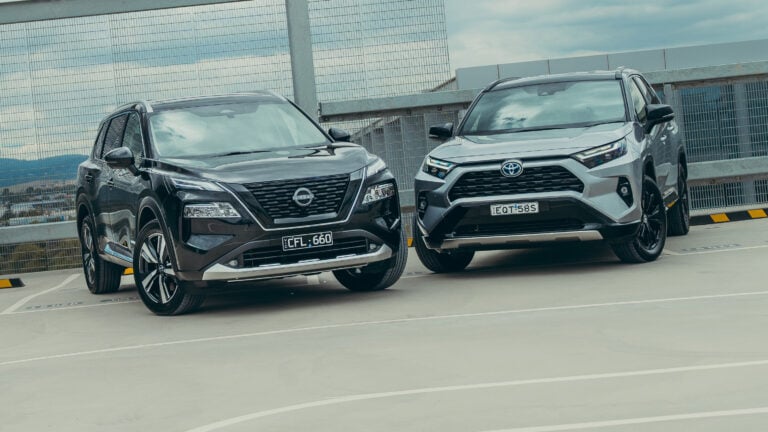 Comparisons
ComparisonsHybrid SUVs compared: 2023 Nissan X-Trail E-Power vs Toyota RAV4 hybrid
Toyota’s dominant RAV4 is comprehensively pipped by Nissan’s clever new hybrid X-Trail E-Power – and not just because you can get one sooner
-
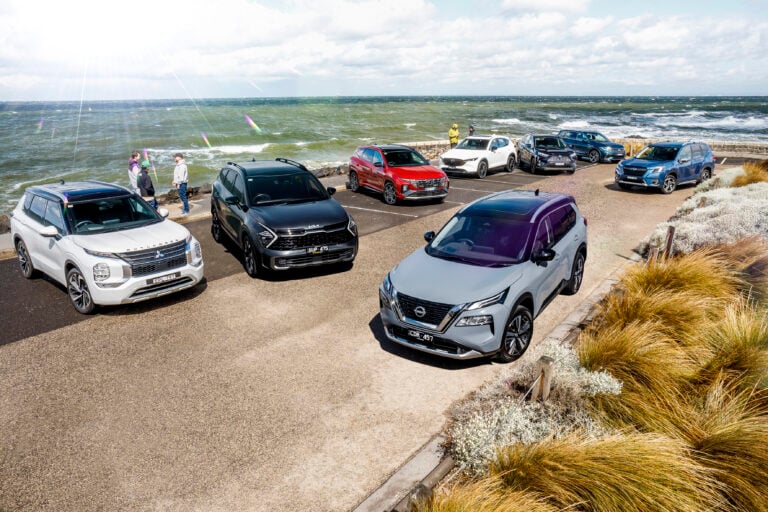 Comparisons
ComparisonsBest Medium SUV 2023: Family Car Comparison
Thinking of buying a new mid-size SUV this year? We test eight of the best and most popular contenders to see where you should spend your money
-
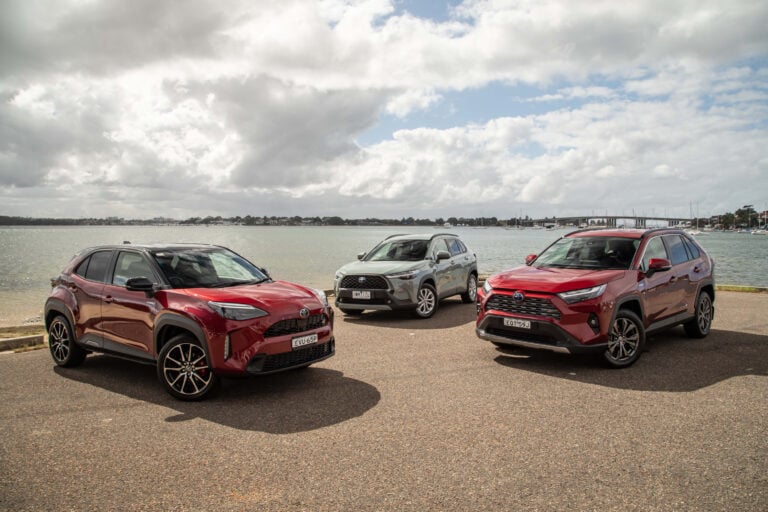 Comparisons
ComparisonsToyota hybrid comparison: 2023 Yaris Cross vs Corolla Cross vs RAV4 review
Toyota's expansive hybrid SUV range looks a little complicated from the outside, so we put three of them together to help find the best one for you



